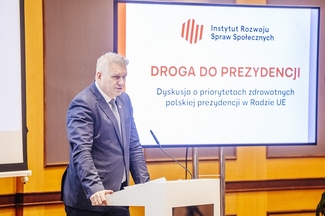Pobierz materiał i Publikuj za darmo
SANTA CLARA, Calif., March 06, 2019 (GLOBE NEWSWIRE) -- SI-BONE, Inc. (Nasdaq: SIBN), a medical device company that pioneered minimally invasive surgery of the sacroiliac (SI) joint with the iFuse Implant System® (iFuse), announced publication of 2-year results from iMIA (iFuse Implant System Minimally Invasive Arthrodesis; ClinicalTrials.gov ID NCT01741025), a multicenter European RCT in the Journal of Bone and Joint Surgery (JBJS).
iMIA is a Level 1 RCT, conducted at nine hospitals in four countries in Europe, that assessed the safety and effectiveness of SI joint fusion (SIJF), also referred to as SI joint arthrodesis in the manuscript, with the triangular iFuse Implants compared to conservative management (CM) in patients with chronic SI joint dysfunction. The JBJS publication, titled Randomized Trial of Sacroiliac Joint Arthrodesis Compared with Conservative Management for Chronic Low Back Pain Attributed to the Sacroiliac Joint, [1] showed that minimally invasive SIJF with iFuse Implants was safe and more effective than CM in relieving pain, reducing disability, and improving patient function and quality of life at two years.
“What I find remarkable is the consistency of the results between the 2-year iMIA and 2-year INSITE RCTs,” said David Polly, Jr., MD, Professor, Department of Orthopedic Surgery at the University of Minnesota. “The studies, which were well designed and well executed, were conducted at a combined 28 different centers on two different continents, yet the results are almost identical, which only further validates the effectiveness of the use of the iFuse triangular titanium implants for the treatment of patients with chronic SI joint dysfunction who no longer respond to conservative treatment.”
The iMIA 2-year results were published in JBJS, which has an impact factor of 4.84, the highest among orthopedic journals, and is a highly valued source of information for orthopedic surgeons and researchers. As such, this publication, which is the 67th peer-reviewed iFuse publication, is a significant indication of the broad acceptance of SI joint surgery as an important topic of study in orthopedics.
“The publication of this Level 1 study in a prestigious orthopedic journal such as JBJS is an important milestone signaling recognition of the sacroiliac joint, like all other joints in the human body, as a pain generator and acknowledgement of the high quality of evidence that supports iFuse as an effective minimally invasive procedure for patients with SI joint pain”, said Daniel Cher, MD, Vice President of Clinical Affairs at SI-BONE, Inc.
As shown in Figures 1 and 2 below, 2-year results from iMIA were remarkably consistent with 2-year results from INSITE (Investigation of Sacroiliac Fusion Treatment – NCT01681004), the RCT conducted at 19 institutions in the U.S. and published in August, 2016 in the International Journal of Spine Surgery [2].
In the iMIA study, 103 subjects were randomly assigned to CM (n=51) or SIJF (n=52) between June 6, 2013 and May 15, 2015. At 2 years, mean low back pain (as measured on the Visual Analog Scale, or VAS) improved by 45 points in the SIJF group and 11 points in the CM group (mean difference between groups 34 points, p
Pobierz materiał i Publikuj za darmo
bezpośredni link do materiału
| Data publikacji | 07.03.2019, 10:11 |
| Źródło informacji | GlobeNewswire |
| Zastrzeżenie | Za materiał opublikowany w serwisie PAP MediaRoom odpowiedzialność ponosi – z zastrzeżeniem postanowień art. 42 ust. 2 ustawy prawo prasowe – jego nadawca, wskazany każdorazowo jako „źródło informacji”. Informacje podpisane źródłem „PAP MediaRoom” są opracowywane przez dziennikarzy PAP we współpracy z firmami lub instytucjami – w ramach umów na obsługę medialną. Wszystkie materiały opublikowane w serwisie PAP MediaRoom mogą być bezpłatnie wykorzystywane przez media. |








